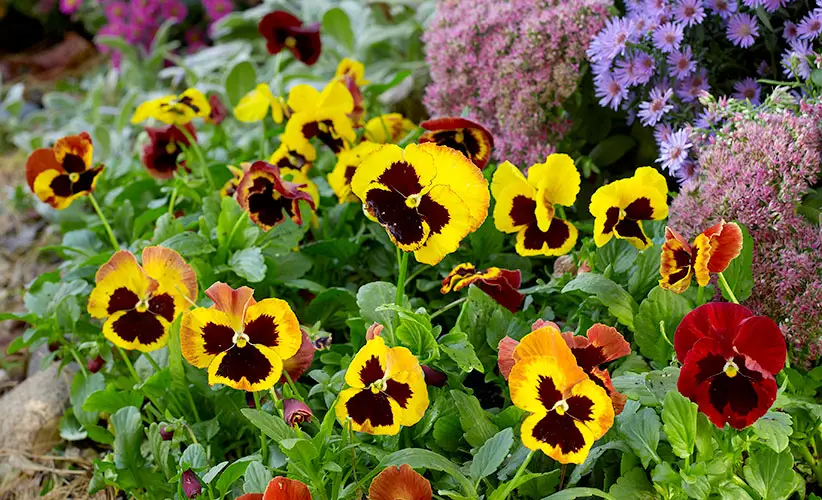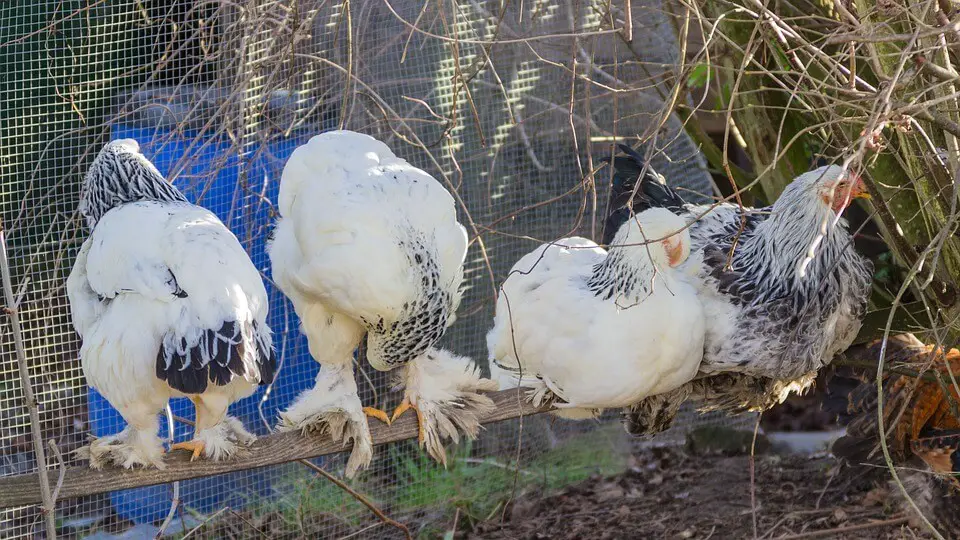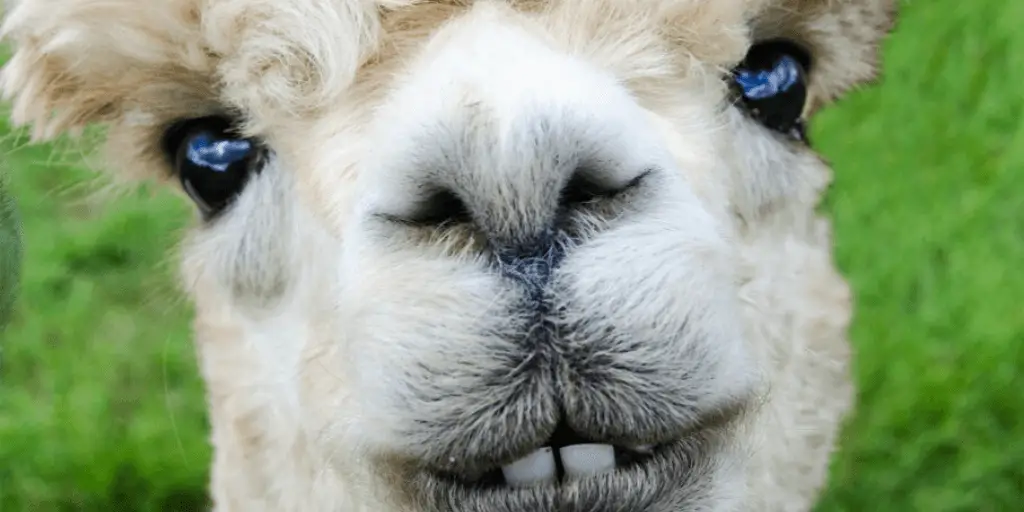Do Deer Eat Mums?
Last Updated on May 25, 2022 by Duncan
Chrysanthemums or mums are flowering plants common in most Asian and European homes.
Besides giving the yard a homey look, they are also used as a natural insecticide and in controlling air pollution.
Mums are also used to make beverages such as tea in Asia.
If you have mums in your garden and you live near deer, you must be wondering, do deer eat mums?
Contrary to popular belief, mums aren’t toxic to deer, so yes, deer will eat mums when they come across them. You can see deer eating mums in this video.
How to keep deer from eating your mums
To keep deer from eating your mums, you need to keep them out of your garden.
Luckily, there are plenty of ways of doing it. One of the cheapest and easiest ways is to place human hair on the plants.
The smell from the hair will keep them away. All you need to do is visit your local hairdressing salon and ask them to lend you some.
You can also use deer repellents such as Mint Scent Deer Spray that contains strong oils that make the mums inedible to deer but stay harmless to you and your pets.
There are also noisemakers such as compact solar ultrasonic animal repellent that will detect the deer and make noises to frighten the animal.
You can use your lively dog to keep the animals away, but it has to roam the entire property and stay out all night long.
If you have the budget, put up a fence that is at least 8 feet high.
Most deer will shy away from getting too close to the house to eat the mums—unless they are too hungry, of course, so put your mums as close to the house as possible.
Put the mums in containers and place them on the porch. At night, keep the porch well lit.
Would you like to learn other ways to keep deer out of your garden? Learn it here.
How to take care of mums
Besides protecting the mums from deer, rabbits, and other animals, there are plenty of other things you can do to keep the flowering plants in top shape. Some of these things include:
Select a healthy plant
When buying the plants from the stores, be cautious of the plants you buy, as purchasing the wrong ones will make your work more difficult.
As a rule of thumb, don’t buy wilted plants or plants with yellowed leaves.
To increase your chances of getting healthy plants, visit the store when they get their new batch.
If you can, contact a person who grows the plants, visit their farms and choose the healthy ones.
Place the flowering plants in a large pot.
At the time of purchase, mums are root-bound, and for you to keep them healthy and vibrant, you need to place them in a larger pot.
Use good quality potting soil mix and always place a layer at the bottom to prevent the roots from getting damaged.
Keep the plants away from artificial lights.
Mums are short-day plants, so they need long periods of darkness to flower.
To have as many flowers as possible, reduce the time you expose the plants to street lights and other forms of artificial light sources. If possible, switch off the lights where you have placed the mums.
Give them enough water.
Just like any other plant, mums need water to grow.
Many people pour water over the top and let it drip into the soil. Don’t do this, as you will be asking the plants to develop fungi.
To prevent diseases, water as close to the roots as much as possible.
When watering, aim to saturate the soil—not the leaves or stems.
Water the mums more frequently when you pot them the first time, then give them one inch of water every week. If you notice the leaves wilting, increase the watering frequency.
Get rid of troubled areas as fast as possible.
It’s normal to have aphids in all USDA zones. Luckily, you can remove them using a strong spray of water.
If you live in tropical climates, the mums can be attacked by boring insects, often larvae of moths and beetles.
To prevent your plants from getting damaged, clear the weeds from underneath the mums and remove any leaves and stems that might be infested with the larvae.
You can also apply pesticide Bt or Bacillus thuringiensis. Use a good quality garden sprayer such as Chapin 20541 and cover the mum’s leaves and stems.
Are your plants affected by fungi? Treat stem rot, pythium root, botrytis blight, bacterial leaf spot, and white rust as fast as you notice it. Use natural fungicides such as neem oil, garlic oil, or sulfur.
Mix ½ to 4 teaspoons of the concentrate for each gallon of water and apply it until the infestation is gone.
Remember to wear garden gloves and safety glasses to protect yourself from the chemicals.
Fertilize the mums
For the healthiest plants and best blooms, apply fertilizer on your mums. Use a balanced all-purpose fertilizer and apply it 6-12-6 at a rate of ½-1 lb per 100 square feet. You can also use a liquid fertilizer such as Miracle-Gro or Peters and apply it once a month.
Apply the fertilizer during the vegetative growth period to prevent premature flowering.
Pinch the flowers
Did you know mums produce bigger flowers and more sturdy stalks when you pinch the tips of each stem throughout the growing season?
Pinching the mums also prevents the plant from getting leggy with skinny stalks that fall over.
Deadhead dead flowers
You can use your fingers or pruning shears to pinch off the dead flowers.
The purpose of doing this is to make the mums look prettier and neater. It has also been shown to extend the time that the flowers bloom.
When dead heading, cut off the dead flowers above the next set of leaves.
Protect the mums from winter
If you live in the northern states, the hardy mums aren’t always hardy, so they are easily damaged by the harsh winter weather. Luckily, you can protect them by ensuring that the soil is moist all the time.
Also, consider mulching with straw after several hard touches of frost. At this time, don’t remove the dead plant materials as they will provide a layer of insulation.
Once the winter subsides, remove the dead mum material and straw and use cypress or hardwood mulch after fresh growth appears.
Common Deer and Mums Questions
How do you tell if deer are eating your mums?
If you aren’t observant, you might fail to pick signs that deer are eating your mums. Luckily, if you are keen, you can tell.
Deer tear and rip the leaves off the plants, creating jagged edges that clearly show that your garden is infested.
You can also look out for deer dropping near your mums. If there are droppings, it’s a clear sign the animals are present and feeding on your mums flowers.
Do deer eat potted mums?
Yes, they do. Luckily, you can easily control them by bringing them as close to the house as much as possible. You can even bring the potted mums inside the house.
Will using vinegar near my mums deter deer?
Most animals, including deer, raccoons, and rabbits, don’t like the vinegar scent, so yes, using vinegar near your mums will deter the animals. Unfortunately, you have to ensure that the scent is always present to keep the animals away. This means that you have to keep reapplying the vinegar.
Do mums grow back if deer eat them?
Yes, most of the time, the plants will come back. However, if the damage is extensive, they might fail to recover. We can conclude that it all depends on the amount of damage inflicted on the plants.
Fun facts about mums
- The Mum flower is one of the most popular flowers in the world, next to the rose.
- There are over 40 species of mums, and thousands of varieties created via selective breeding.
- Mums were first cultivated in China as a flowering herb.
- The flowers come in a variety of shapes and sizes, and the flowers significantly differ between species.
- Mums are known for their traditional yellow color, but they come in many other colors: purple, burgundy, red, bronze, white, pink, and lavender.
- Mums with over one flower are known as spray chrysanthemums.
- Mum’s flowers bloom in various forms. They can be daisy-like, pompons, decorative, or buttons.
- Mums are composites. This means that the flower heads are made up of tiny individual flowers. The flowering parts of the flowers are made up of ray and disk florets.
What animals eat mums?
Besides deer, there are plenty of other animals that eat mums. They include:
- Squirrels
- Rabbits
- Groundhogs
- Chipmunks
Conclusion
Deer do eat mums, so if you don’t want your flowering plants destroyed, protect them.
You can protect them using deer deterrents, putting up a fence, or any of the many ways we have mentioned above.
If planning to grow mums, choose a healthy plant that will be easy to maintain. You don’t want a plant that will be sickly all the time, do you?


